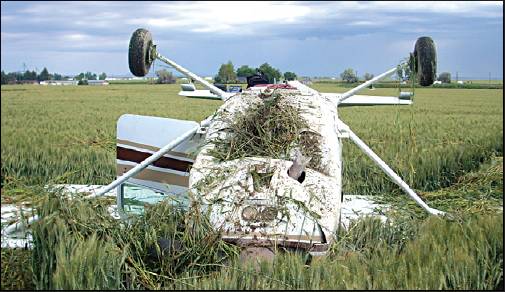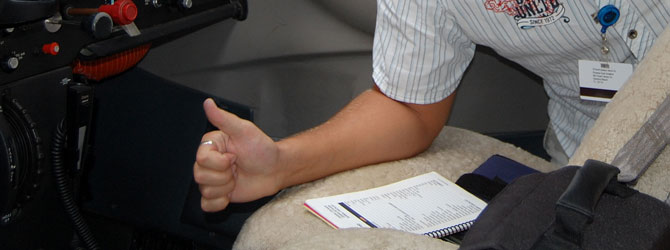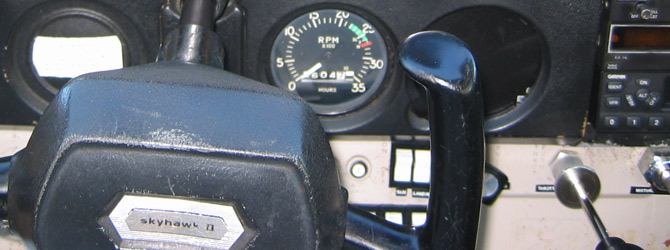
the importance of checklists
Just before my check-ride I reached into the cockpit to grab the handy spiral-bound, laminated checklist book for the 24V, the stalwart 172 XP that would be helping me get through the next hour and a half of being more nervous than I was at my wedding. As I flipped to the page with the walk-around, my DPE (Designated Pilot Examiner) raised an eyebrow and asked me if I ever saw a tubeliner pilot walking around his jet with a list in hand. Sheepish – and more than a touch confused – I slowly returned the list to its resting place in the pocket by the left seat. He explained that they were CHECKLISTS not TO DO lists.
Admittedly I’d never heard that, not from my instructor, not in my ground-courses, never. What he was talking about, however, was the idea of a “flow” and a “Checklist.” he wasn’t telling me to ignore the list, just memorize it – then check it once I thought I was done to make sure my memory was right.
Checklists had always been one of those necessary evils as far as I was concerned – nothing ever turned up, even in the beat up old trainers from the seventies I was flying always performed beautifully. As I sat in the runup area “wasting” precious hobbs time, watching my dollars fly out the window I would begrudgingly do each item.
But just a few months after I got my private license I was out to maintain my night currency (3 landings to a full stop sometime between 1 hour after sunset to 1 hour before sunrise) and something odd happened. I had taxied the nearly 2 miles from my FBO down to the active runway (see my earlier post about how not to die.. the wind favored northbound runways and I wasn’t going to use the close, short one that terminated in an unlit river followed by a housing development, not at night) and was going through my normal procedure – flight controls free and correct, set brakes, throttle to 1800rpm, mag L, 50rpm drop good deal, back to both, 1800rpm, mag R 300rpm drop.
I tried it again, same thing. Troubleshooting, I leaned the mixture as far as I could without starving the engine for gas (actually pretty lean at nearly 5,000′ MSL) and ran the engine up to 2,200rpm on the R Mag to see if I could burn off some deposits. The second mag check was a little better, but still a 250rpm drop. The checklist states no more than 150rpm drop and less than 50 rpm difference between the two mags. So, frustrated and irritated, I taxied back to the fbo and tied up the plane. I heard from the mechanic a week later that he had to completely replace the spark plugs.
The scary thing to me was that it had been up a few times in the meantime – a combination of soloing students, training runs, and I’m sure a few PPL renters out for a joy ride. The good news is that we have plenty of wheat and potato fields out here in which to make a rather nice landing should the need arise. The bad news is that I’ve seen more than one of our trainers take that option. No one that I know has been hurt yet, but the potential is certainly there.
To drive that point even further into my newly minted aviator’s brain, I took my parents up for a spin in one of the 172 trainers a while ago, we were up over the mountains between Idaho Falls and the Tetons, made a touchdown at Alpine and flew back over the reservoir. On the next flight, a piston failed and seized up the engine – threw parts and pieces all through the inner workings of the machinery that was keeping that plane in the air. The instructor did a great job of navigating the plane to a safe field, but it was tall wheat that got wrapped in the prop and flipped the plane, rendering it a total loss. Both occupants walked away. And that was when everything on the checklist went well!

I am guessing what happened in the intervening flights on 24V between the time I squawked the bad runup readings and the time the flight mechanic grounded it for having bad mags is a sloppy checklist – and I’m certainly guilty of having done this before. There are myriad ways to shortcut; do the runup and ride the brakes down the taxiway – paying more attention to staying on centerline than the actual tach readings; or after listening closely to ground and tower it becomes obvious that the regional is about to taxi so you hastily run through the typical checks without registering the real results (you’ve done it so many times and nothing’s been wrong, they do 50 hour checks after all…).
The importance certainly wanes in flight sim when you’ve gone in and disabled all of those pesky failures, or given the fact that the simulated crash has no fatal aftermath or mountains of NTSB paperwork to deal with. However, in a world where we spend countless dollars to simulate the real deal – buying these amazingly silly looking devices to track head movement, purchasing the latest and greatest, most realistic aircraft we can find, even adding extra monitors to be that much more immersive, it seems logical to do one of the things we can generally imitate almost in its entirety: running the checklist.
Check out the AoA trainings to learn more about specific aircraft, but in general you should be performing a pre-flight check, a pre-taxi check, a pre-takeoff check, post-take off, pre-approach, approach and post landing checklists. I’ll go into more detail in later posts on what I do in the smaller planes – both in reality and in the sim.
At the end of the day, everything is there to save your life; for those of us who are practicing to hone our aviation skills, practicing checklists is a vital part of ensuring the habit is there. For those of us who are trying to imitate life as closely as possible, it is equally as important – this is a critical part of the aviation ritual.
This article was posted in Aviation, Blog, Real World, Safety
Please note: We reserve the right to delete comments that are snarky, offensive, or off-topic. If in doubt, read the Comments Policy.



